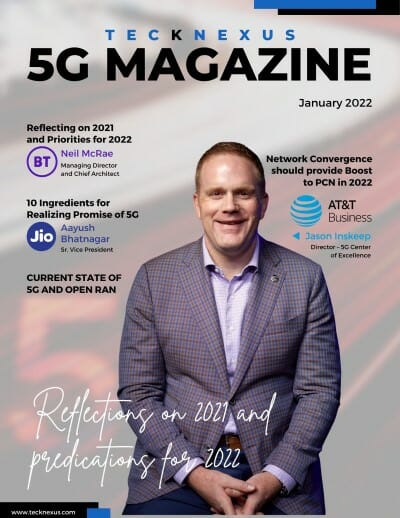As the majority of 5G use cases are expected to occur indoors, this session delved into the opportunities and challenges associated with indoor 5G deployment. Our panel of experts explored the remaining technical aspects that require refinement for optimal indoor 5G performance. Furthermore, we dove into the exciting realm of new business cases that indoor 5G enables, as well as the regulatory aspect of indoor 5G. Discover how this advanced connectivity technology unlocks innovative revenue streams in various sectors, such as smart buildings, industrial automation, healthcare, and more.
Speakers:
- Dean Bubley, Director, Disruptive Analysis
- Aigars Runčis, Ventures Department Director, LMT
- Sietse van der Gaast, Co-chair/Senior enforcement officer, BEREC WNE Working Group/ACM Netherlands
- Mikael Lundman, CEO, Proptivity
Based on the detailed discussion from this podcast, here’s our Q&A article that captures the essence of their insights.
What are the main challenges for deploying indoor 5G?
Aigars Runčis: The main challenges stem from integrating 5G into existing infrastructures, which is complex due to the diverse nature of buildings and their construction materials. Modern buildings, with their steel frames and energy-efficient coatings on windows, significantly reduce the penetration of 5G signals from outside. This necessitates the development of indoor solutions that are capable of delivering the high-speed, low-latency benefits of 5G within these environments. Furthermore, coordinating between multiple stakeholders, including property owners, telecom operators, and technology providers, adds layers of complexity in terms of implementation, management, and cost-sharing.
How can indoor 5G contribute to new revenue streams?
Mikael Lundman: Indoor 5G is a game-changer for many industries by facilitating operations that were previously challenging due to connectivity limitations. For instance, in healthcare, it enables real-time remote monitoring and consultations, significantly expanding the reach of medical services and creating new opportunities for telehealth services. In the manufacturing sector, 5G can connect numerous sensors and machines in real-time, optimizing production lines and reducing downtime, thereby opening up new models for as-a-service offerings. Retailers can leverage indoor 5G to enhance customer experiences through augmented reality and personalized shopping assistants, creating opportunities for increased sales and customer loyalty. Each of these applications not only enhances operational efficiencies but also creates avenues for new services and revenue models.
What role does security play in the adoption of indoor 5G?
Aigars Runčis: Security is a critical factor that influences the adoption of indoor 5G, especially in sectors handling sensitive information, such as healthcare and finance. The enhanced security features of 5G, including advanced encryption and the ability to enable network slicing, provide a robust framework for protecting data. However, the move to more open and software-driven architectures also introduces new vulnerabilities. There is a need for continuous vigilance and the development of security protocols that can adapt to emerging threats. Ensuring the security of indoor 5G networks not only protects sensitive data but also builds trust among users and accelerates the adoption of 5G for a wide range of applications.
How can regulatory challenges related to indoor 5G be overcome?
Sietse van der Gaast: Regulatory challenges for indoor 5G are multifaceted, ranging from Spectrum allocation to ensuring equitable access across different venues. One approach to overcoming these challenges is through the development of clear guidelines and frameworks that support the shared use of Spectrum, specifically tailored for indoor environments. This includes defining rules around neutral host networks that can serve multiple operators, thereby maximizing Spectrum efficiency and reducing deployment costs. Additionally, encouraging collaboration between telecom operators, building owners, and government bodies can facilitate the creation of policies that incentivize the deployment of indoor 5G networks while ensuring that they meet specific security and performance standards. Regulatory bodies could also explore innovative licensing models that allow for more flexible use of Spectrum in indoor settings, further lowering the barriers to deployment.
What impact will indoor 5G have on sectors like healthcare and manufacturing, and how does it enable new business models?
Dean Bubley: Indoor 5G is poised to revolutionize sectors like healthcare and manufacturing by providing the connectivity backbone for IoT devices, real-time data analytics, and autonomous operations. In healthcare, this means enabling technologies such as remote surgeries, patient monitoring, and AI-driven diagnostics, which can significantly improve patient outcomes and operational efficiencies. For manufacturing, indoor 5G enables the realization of the smart factory concept, where machinery and equipment are interconnected, allowing for real-time monitoring, predictive maintenance, and automated inventory management. These capabilities pave the way for new business models, such as as-a-service offerings, where companies pay for outcomes rather than physical products. For example, a manufacturer might pay for guaranteed uptime of machinery rather than purchasing the equipment outright. Similarly, healthcare providers could offer remote monitoring services as a subscription, broadening access to healthcare services and creating new revenue streams.
Given the challenges of indoor 5G deployment, who should bear the cost of building these networks, and how can costs be mitigated?
Mikael Lundman: The question of who should bear the cost of indoor 5G deployment is complex and likely to vary by case. Ideally, the cost should be shared among all stakeholders who stand to benefit, including mobile network operators, building owners, tenants, and in some cases, the government. Building owners and operators can view indoor 5G as an investment in the property, enhancing its value and attractiveness to tenants. Mobile operators can contribute by providing equipment and expertise, viewing it as an extension of their network that improves service quality and customer satisfaction. Government subsidies or incentives could be offered for deployments in critical facilities like hospitals and schools. To mitigate costs, stakeholders can explore models like neutral host networks, where a single indoor network supports multiple mobile operators, reducing redundant infrastructure and ensuring efficient use of Spectrum and resources. Additionally, adopting open standards and interoperable technologies can lower equipment costs and foster a competitive ecosystem of solution providers.
These expanded responses delve deeper into the complexities and opportunities presented by indoor 5G, highlighting the multifaceted approach needed to address challenges, leverage opportunities, and ultimately realize the potential of indoor 5G in transforming industries and enabling new business models.









































